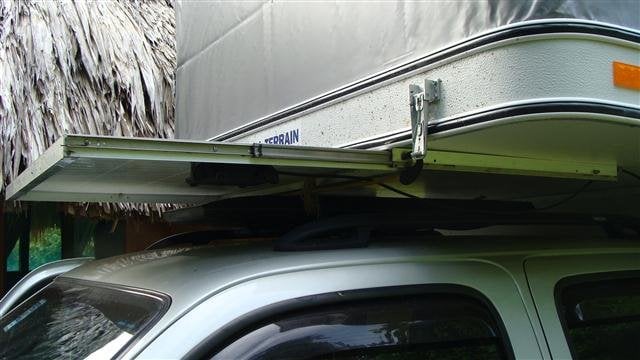The Saints
Senior Member
I know, I could have steped in that one. No, I don't need mental help or anything like that, but somebody or bodies here may think so. No, I need help with two camper items.
First: How long does it take to get the plastic taste out of the water from the holding tank? I have flushed it four times now with a little bit of bleach, but it still tastes bad. I use one of those white hoses to fill it with and all so now what do I do? I know it will eventually go away, but is there a way to speed things up?
Second: I am going to buy a solar panel but I have a couple of questions first. Since I have a Bobcat and the only thing in it that requires DC how big of a panel should I get? The only things in there is a pump for the water faucet, and two flouresent (?) lights. Some times a computer. Some times a bit of the refrigerator too. Star 152 came up with this one and I was going to get that but it must have been a special and is no longer there. http://www.costco.ca...1339&lang=en-CA
So where do I get the solar panel. I want it big enough so I never need to worry about it. And I want it to have the diodes so it doesn't back flow energy, and the minder so I don't have to worry about overcharging. I once had a battery blow up and it is psyco crazy spooky.
So PLEASE HELP ME, and soon,
Thanks a bunch, Scott
First: How long does it take to get the plastic taste out of the water from the holding tank? I have flushed it four times now with a little bit of bleach, but it still tastes bad. I use one of those white hoses to fill it with and all so now what do I do? I know it will eventually go away, but is there a way to speed things up?
Second: I am going to buy a solar panel but I have a couple of questions first. Since I have a Bobcat and the only thing in it that requires DC how big of a panel should I get? The only things in there is a pump for the water faucet, and two flouresent (?) lights. Some times a computer. Some times a bit of the refrigerator too. Star 152 came up with this one and I was going to get that but it must have been a special and is no longer there. http://www.costco.ca...1339&lang=en-CA
So where do I get the solar panel. I want it big enough so I never need to worry about it. And I want it to have the diodes so it doesn't back flow energy, and the minder so I don't have to worry about overcharging. I once had a battery blow up and it is psyco crazy spooky.
So PLEASE HELP ME, and soon,
Thanks a bunch, Scott


